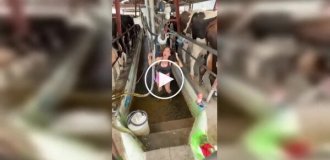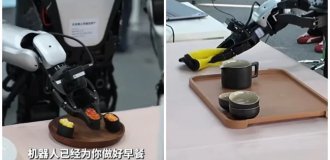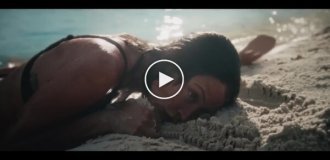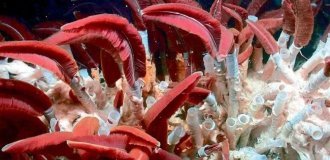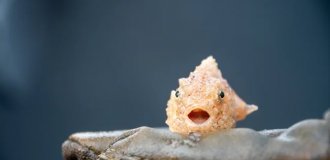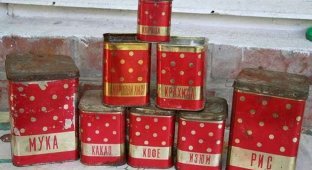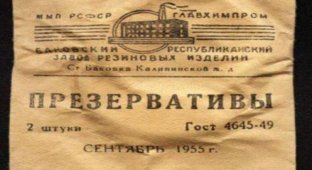Author's words:
I don’t know about you, but for me, and for all my friends, lemonade was my favorite drink when I was a child. That’s what we called all sweet carbonated water in those days. There were many types of it - with different tastes. I want to remember the most popular types of lemonade from childhood today

And I’ll start with “Lemonade” - a drink whose name has become a household name. And rightfully so. After all, its history dates back to ancient times.
The history of lemonade as a soft drink dates back to 500-600 BC. e. It is since then that lemon sorbets have been known. True, back then the drinks were not yet carbonated.
And the lemon drink first became carbonated thanks to the cupbearer of King Louis I. Legend has it that the court cupbearer, presenting the monarch with a glass of noble wine, confused the barrels with wine and juice. Having discovered a terrible mistake on the way to the royal table, the cupbearer added mineral water to the juice and, mentally saying goodbye to the white light, served the new drink to King Louis I. The bold experiment thus presented the royal table with a drink that looked very much like light sparkling wine. Filling the glass with this wonderful thin drink was accompanied by a mesmerizing sound, reminiscent of the sound of a sea surf or a magnificent waterfall... In all likelihood, it was these facts that inspired the unlucky cupbearer and the king’s surprised question: “What is this?”, he answered without hesitation: "Shorle, Your Majesty." His Majesty clearly liked the drink, and from then on Schorle began to be called “royal lemonade.”
In France in the 17th century, lemonade was still prepared from water and lemon juice or lemon tincture, but with the addition of sugar. Often the basis for lemonade was mineral waters, which were brought from medicinal springs. But only representatives of the aristocracy could afford this version of the lemon drink. Almost simultaneously with France, lemonade appeared in Italy. In this country there were much more lemon trees, and they liked to diversify lemonade with various ingredients - infusions of herbs and other fruits.
Drinks began to be artificially carbonated after the English scientist Joseph Priestley first managed to dissolve carbon dioxide in water in 1767. He designed a saturator - a device that made it possible to saturate water with carbon dioxide bubbles using a pump. This is how the world's first sparkling water appeared.
Peter I brought the recipe for the first lemonade to Russia from his European voyages. The famous diplomat of the Peter the Great era P.A. Tolstoy wrote that abroad “they drink more lemonades...”. Unlike all other foreign oddities (smoking, shaving beards, coffee and a number of other news that, despite all the efforts of the emperor, were not particularly popular), lemonade immediately hit the court. As Peter commanded “to drink lemonade at assemblies,” so did the Russian nobility, followed by the merchants, and then other classes who had the opportunity to prepare this expensive drink at that time.
At the beginning of the 20th century, carbonation and bottling technologies were applied to lemonade, which marked the beginning of its large-scale production. During Soviet times, lemonade acquired the status of a national drink. At the same time, recipes for ready-made carbonated lemonades were developed, prepared on natural fruit bases, herbal extracts and sugar. In addition to their pleasant taste, classic domestic drinks had excellent tonic and restorative properties.

The next drink I want to remember is Citro. This is still probably my favorite sweet fizzy drink.
There is a version that Citro came to Russia after the War of 1812, and that the name of the drink comes from the word “citron” - “lemon”.
In the USSR, the drink became popular thanks to the rumor that “real Citro” was served only in closed special buffets and at the Bolshoi Theater. With the emergence of such a myth, it is not surprising that some citizens went to the Bolshoi Theater to drink a glass of Citro
Citro production technology was kept strictly secret, and even today it has remained without significant changes. To make citro, you will need ingredients such as sugar, carbonated water, vanillin, citric acid, fruit or citrus syrup, various food additives, dyes, stabilizers and natural preservatives.
If the drink is prepared according to all the rules, then it can bring significant benefits to the human body. The fact is that citro preserves the unique vitamin and mineral composition of the original raw materials. Among the variety of elements, minerals (calcium, iron, fluorine, magnesium), as well as vitamin C, are of particular value to us.

Another sweet fizzy drink from childhood - “Cream Soda”
Cream soda was invented almost a century and a half ago. The invention is attributed to the doctor's student Mitrofan Lagidze. And already in the Soviet Union this drink became widespread thanks to Stalin, who really loved to savor this dessert water.
“Cream Soda” is one of the first sparkling drinks that began to be prepared on the basis of soda (carbonated) water, invented at the end of the 18th century, and beaten egg whites, hence the word “cream” in the name of the drink. Unlike lemonade, in which the lemon base is primary, and the carbonated component came with time, and historically is not mandatory, in “Cream Soda” the flavoring component and carbonated water are necessary and obligatory components

Having mentioned Mitrofan Lagidze, it is simply necessary to remember another popular drink in those years - “Tarragon”
To find out the history of the creation of the original Tarragon drink, you need to travel back a couple of centuries to Georgia. Here, in 1889, a young pharmacist and inventor Mitrofan Lagidze first prepared a drink based on carbonated water and natural essences from plant materials. The main focus of the sweet soda was on the herb tarragon, a fairly popular plant with a spicy aroma. In common parlance, this herb is simply called tarragon, and it was he who gave the name to the later world-famous drink.
Even before the First World War, the original Tarhun drink brought entrepreneur Lagidze many awards and prizes of international importance. However, in the Soviet Union, the Tarragon drink became popular only years later - mass production of the delicious soda began only in 1981. An experimental batch of the drink, bottled in 0.33 liter glass bottles, was put up for sale in the Main Botanical Garden of the USSR Academy of Sciences and was enthusiastically received by visitors. A couple of years later, in 1983, the secret recipe for the Tarragon drink was transferred to all enterprises involved in the production and sale of soft drinks in the territory of the Union republics. Since then, soda has become available to all residents of the USSR

Sparkling water "Buratino" is the most common non-alcoholic soft drink in the USSR
The drink "Pinocchio" has never been a scarce commodity. "Buratino" was produced in all Soviet republics using the same technology.
No artificial colors or preservatives were used in the production of the drink. The real "Pinocchio" had a shelf life of no more than seven days. Natural sediment may have formed at the bottom of the bottle.
The soda was bottled in 0.5 liter glass bottles. The bottle was sealed with a tin cap. The semicircular label affixed to the top of the bottle depicted the fairy-tale character Pinocchio.
"Buratino" had a transparent golden color, a pleasant sweetish-tart taste, and characteristic effervescent qualities. The drink cost 10 kopecks excluding the price of glass containers

In 1973, the Baikal drink was created as a competitive analogue of Cola.
It was probably the most popular and rather scarce carbonated drink in the late 70s - early 80s of the last century.
It began to be sold en masse before the Moscow Olympics-80. The drink almost immediately gained wild popularity. The composition of "Baikal" favorably distinguished the drink from its Western analogues: in addition to traditional water, sugar, citric acid, extracts of St. John's wort, licorice root and eleutherococcus were added to it. As well as essential oils: eucalyptus, lemon, laurel and fir

Of course, these are not all the lemonades of those years. There were also "Sayans"

"Duchess"

"Bell", "Crushon", "Apple", "Pear", "Orange", "Bee" and many other flavors

And in our city they sold wonderful Georgian lemonades
“Aradu”, “Tbilisi”, “Bakhmaro”, “Isindi” and some others, I don’t remember.

Speaking of lemonades, one cannot fail to mention two more drinks that were very popular in those days. This is, of course, Pepsi.

and "Fanta"
But since at that time it was not just a shortage, but a Deficit with a capital D, these drinks did not offer much competition. At least occasionally they brought Pepsi to us - I still remember it. Transparent bottle 0.33 for 45 kopecks. Scattered in a moment. But I tried Fanta for the first time during a trip to Moscow. For some reason it didn’t reach Kislovodsk

Well, remembering soda, one cannot help but mention soda fountains. They were everywhere then.

For 1 kopeck you could drink clean water with gas, and for 3 kopecks with some syrup (mostly some citrus fruit). Sweet lovers donated two three rubles - and poured it with double syrup





